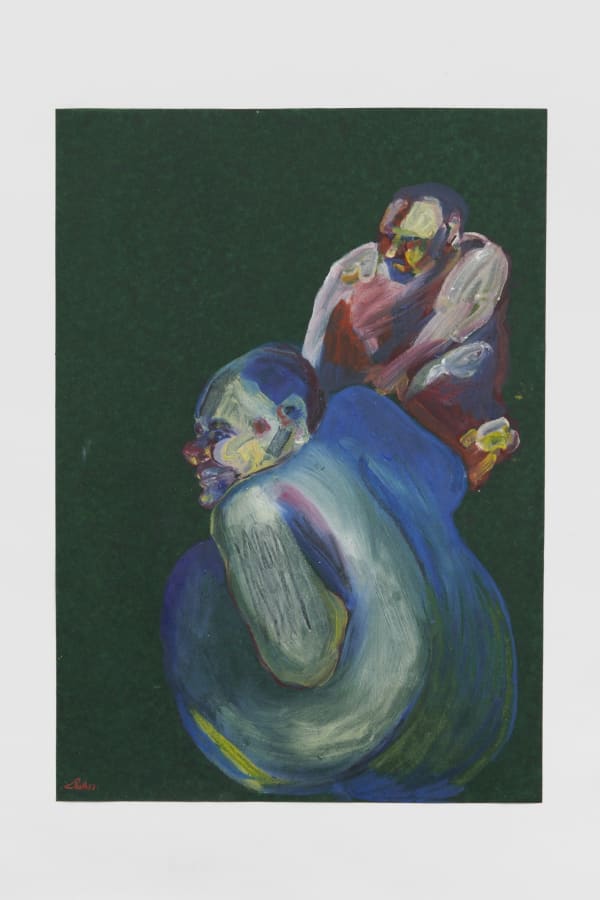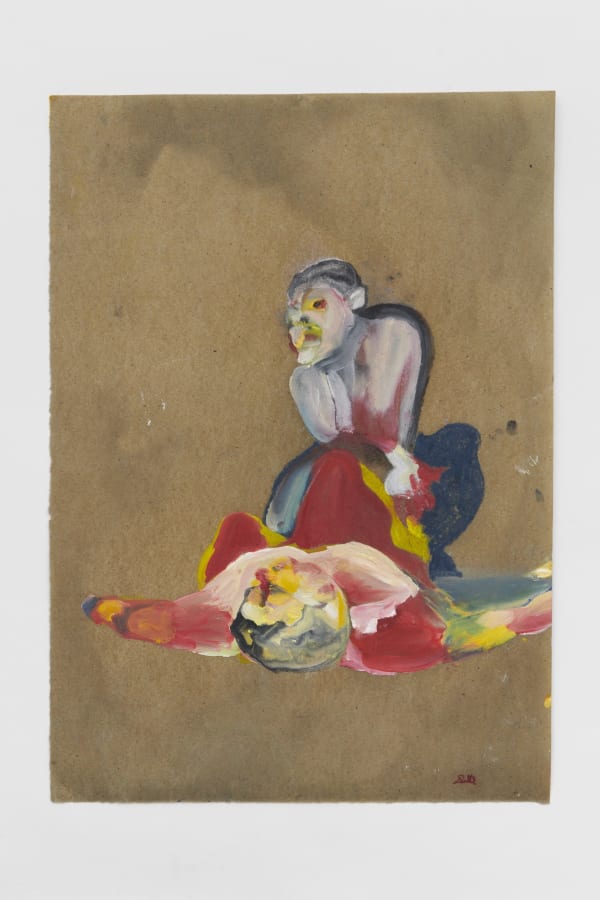Cat Roissetter is known for a labour-intensive drawing method where distortion of form is a symptom of the gradual degeneration of materials – alongside a potency of observation that verges on the neurotic.
Departing from her more frequently exploited medium of drawing, Roissetter presents a new series of paintings on primed ‘sugar paper’ that continue the investigations and concerns central to Roissetter’s last body of drawings – English Filth. The title of this ongoing series, has as much to do with the material on and with which she works – often oil-soaked paper, repeatedly worked into with lines and blocks of graphite colour, paint and oil bar – as it does with a specific idea of English culture: a crusted veneer of politeness that masks a festering mass of seediness and vice.
Rooted in a Victorian, dualistic and hypocritical morality, this approach to culture is nowhere more emblematic than in the tradition of English portraiture, where nudity is typically absent. The puritanical streak in British history and culture, which presumes that nudity is always on some level a depraved state, transforms natural things into criminality and depravity, something inherently suspicious. So Roissetter gives us the Hyde to English Portraiture’s Jekyll; she shows us Dorian Gray’s portrait in the attic. She creates a visual language that is fluid and complex enough to soak up myriad implications and projections; her art is the oil-soaked paper on to which our ideas and images attach and fall apart, in a process of psychological unravelling, a playful interrogation of our own subconsciousness.
Furthermore, these new paintings draw from other similar source material as previous – Tobey Jugs and other ornamental oddities, pornography, images of British football hooligans and ‘Brit’s Abroad’ sweat soaked bodies in nightclubs coalesce in Roissetter’s works to form a hybrid vision strange and peculiar to the British cultural experience. Defining the paintings apart from their drawing predecessors, Roissetter expands reference points to classic English literature. Titles of works are extracted lines from Chaucer’s Canterbury tales. The satirised (often abhorrent) character portrayals found in these medieval texts perfectly reciprocate Roissetter’s concerns – that of the tension between corrupt, transgressive and depraved with chaste outward projections. Similarly, Roissetter created the works whilst reading a collection of essay’s by Georges Bataille Literature and Evil (1957) – where the author explores the value of evil as expressed in celebrated classic literature. Included in this is an essay focussing on Emily Brontës Gothic literature masterpiece Wuthering Heights – Bataille arguing that the tumultuous love story between Catherine and Heathcliff is an expression of evil. It’s precisely this undercurrent of the vulgar, sinful and the reviled that fascinates the artist as much as it repels her, and indeed is reflected in the works. It is therefore, no wonder, that British classic literature become reference ripe for the taking.







